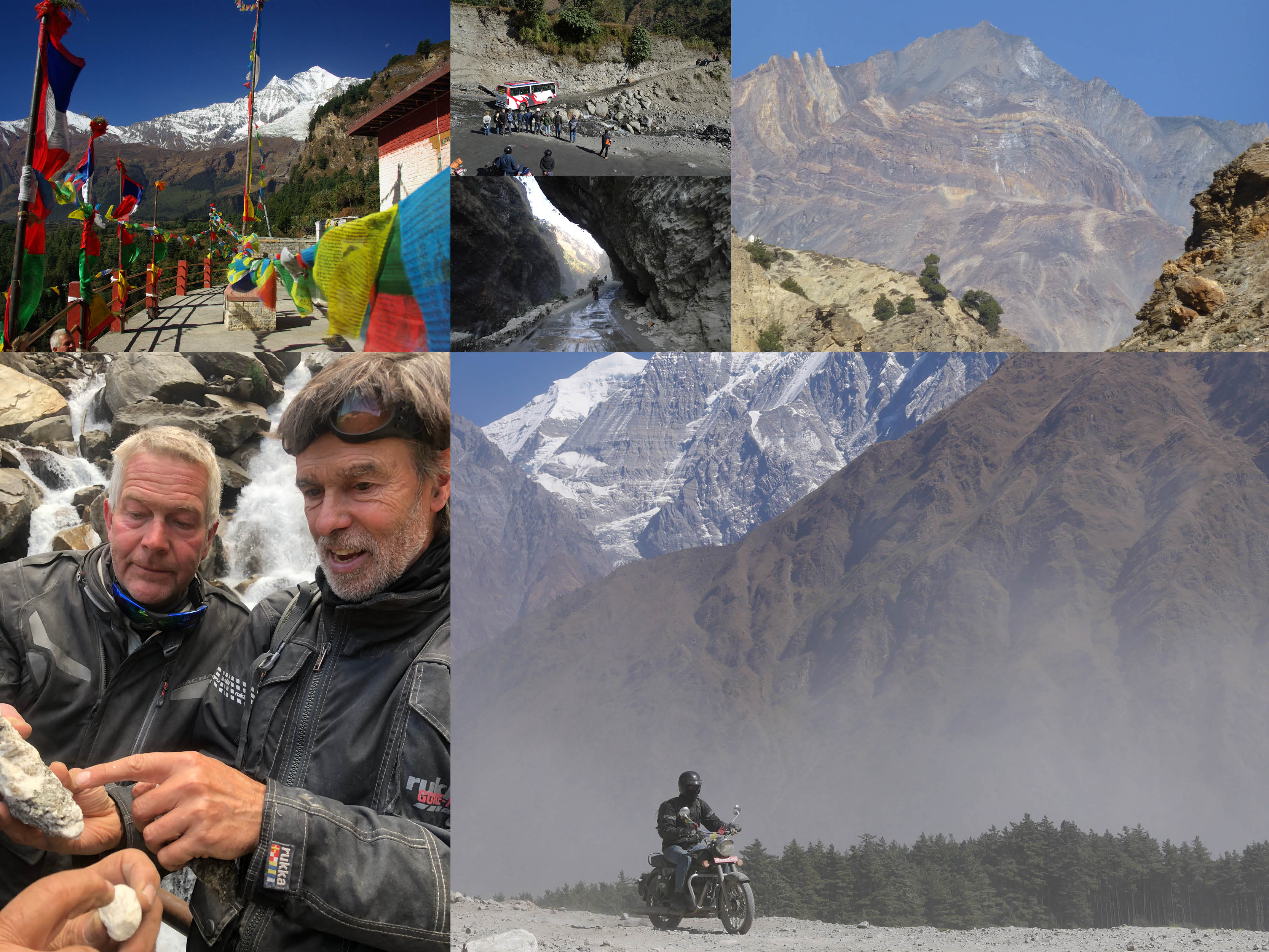A Himalayan Adventure on a motorbike

Article by Andy Los
Last November I fulfilled a life-long dream of visiting the Himalayas in Nepal. A worn out knee prevented me from any serious hiking so I decided to go on a motorbike. I joined a group of 5 Frenchmen, 2 Belgians, an Austrian and another Brit in Kathmandu and rode on an Indian-built, modern, Royal Enfield 500cc Bullet motorbike.
Nepal is a small, long and narrow country, about the size of England. Despite its modest size it has an incredible variety in terms of geography and geology. Altitudes range from less than 100m on the Ganges Plain to over 8000m and some of the highest mountains in the world. The peaks finally give way to the Tibetan Plateau that is literally the “roof of the world”.
The Himalayas were formed around 50 million years ago when the Indian plate, having broken away from Pangaea, crashed into Asia. The plate is still pushing north and, as a result, the area is very active seismically as demonstrated by the tragic major earthquake in 2015 that killed over 9000 people. Rivers cut into this incredible landscape forming deep gorges. My journey followed the Kali Gandaki river up the Mustang Valley which is the deepest gorge in the world between Annapurna (8091m) and Dhaulgiri (8167m).
The gorge starts in Beni where any remnants of a tarmac road disappear. The foothills are composed of dipping, deepwater limestones that were deposited in front of the mountain range and have now been thrust more than a 1000m above sea level. As we moved north into the very heart of the mountains we saw slates, schists and gneisses along with shales containing ammonites plus seismic-scale evidence of thrusting on the valley walls. Streams frequently crossed the “road” that, incredibly, was also used by the local buses. The roads were in need of constant repair and we all had to stop and help rebuild the roads that meant there was ample time to look at, and handle, the rocks.
Moving north from Tatopani to Marpha took over 6 hours, covering just 30 miles due to the poor state of the road. Beautiful banded gneiss could be seen in the valley bottom along with pegmatite veins studded with huge lumps of muscovite, the size of golf balls.
Further north, gaining altitude and blown along by a strong katabatic wind, the valley opens out into an intermontane basin with a wide braided-stream system covering the valley floor. We finally reached our destination of Muktinath, a holy site for both Hindus and Buddhists. The Hindu temple is built of lustrous, local, olive-green slate and the huge Buddha beside it is surrounded by small cairns of the same rock.
The Nepalese people were incredibly welcoming, particularly to the British, because of the British army and the Gurkhas. Even though there are some challenges visiting remote areas in Nepal it’s definitely worth a trip and should really be on any geologists’ bucket list!

